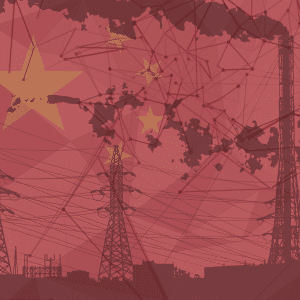China is playing an increasingly significant role in the global green transformation. As the world’s largest producer and exporter of solar panels, wind turbines, and electric vehicles — and with the largest domestic market for many of these technologies — the country is a key player in developing sustainable industrial processes. A deliberate strategic approach has helped China cement its technological leadership in renewable energy and climate-friendly innovation.
On behalf of the Austrian Chamber of Labour (AK), Lia Musitz authored a study on this topic, which she presented to more than 70 interested attendees during a Research Insight event on February 18, 2025.
Targeted Transformation: From a Fossil-Based to a Sustainable Economy
As early as the 1990s, the Chinese government recognized the need to restructure its fossil-fuel-based and export-driven economic system. Resource scarcity, environmental degradation, and energy security concerns were driving forces behind this transformation. The goal was not only to establish a more sustainable economic model but also to develop a strong domestic market for green technologies. To this end, China devised a strategy that it has consistently pursued to this day.
China’s Three-Phase Strategy for Market Development
China’s success in green technologies is built on a structured, three-phase approach:
-
Localization and scaling in the 2000s: Through pilot projects, local content requirements, and procurement mandates, production capacities were established and initial market structures developed.
-
Commercialization in the 2010s: Tax incentives, subsidies, and regulatory measures promoted the widespread adoption of green technologies on a national level.
-
State withdrawal and international competition (ongoing): After successfully building domestic markets, the state gradually scaled back its support to make Chinese companies globally competitive.
Policy Tools as a Key to Success
China thus relied on a comprehensive mix of policy instruments to facilitate the transition to a green economy. In addition to pilot projects and targeted public procurement, emissions standards, purchase subsidies, and investments in critical infrastructure — such as ultra-high-voltage power lines — played a crucial role. This focused government direction enabled relatively rapid scaling of new technologies.
Learning from China?
China’s approach shows that successful transformation does not rest on a single measure but on a coordinated and long-term plan that is followed through consistently. The combination of market incentives, regulatory requirements, and infrastructure investments enabled China to position itself as a market leader in green technologies. And while China was the world’s largest greenhouse gas emitter in 2022, accounting for 29% of global emissions — driven by high industrial energy consumption and its role as the “world’s factory” — its example offers valuable lessons for the transformation of our own industries: A clear strategic roadmap at the highest political level, combined with targeted support measures, can help successfully integrate sustainable innovations into the market and future-proof industry.
The remaining question was how Austria and Europe — under the conditions of democratic societies with market economies and comprehensive social systems — can secure the necessary commitment from relevant players to follow through on the continent’s already well-designed strategies over longer periods and thereby achieve medium- to long-term success.
The next opportunity to delve into these and similar questions will arise on March 26, when Bernhard Seyringer reports on data ecosystems in the People’s Republic of China.
Lia Musitz’s study is freely available for download here:
China’s Green Technology Leadership by Design
